













“As soon as children find something that interests them, they lose their instability and learn to concentrate.” p. 17
What’s a new pandemic habit you’ll continue as a family?















“As soon as children find something that interests them, they lose their instability and learn to concentrate.” p. 17
What’s a new pandemic habit you’ll continue as a family?
If there is one sentence in this month’s issue of ParentMap that I could cross-stitch on a pillow as a mantra for every family experiencing understandable back-to-school jitters, it would be the advice of Michelle Terry, M.D., a clinical professor in the Department of Pediatrics at the University of Washington School of Medicine we interviewed for our wellness feature (Getting School-Ready, p. 28): “Expect the best, begin with a positive attitude and follow through with that.”
That’s generally applicable and optimistic life advice, but it is particularly important coaching as we embark on a new school year, still beset with many pandemic uncertainties and fears. Most of us are actively fretting about a myriad of factors; to name a few, apart from the obvious threat that our children might contract COVID-19: that they have slipped dangerously behind in terms of academic progress; that 18 months of distancing have stunted their socialization skills and emotional health; that continued coronavirus surges will sweep us all back into our caves again. Not your garden-variety back-to-school concerns, to be sure. (How strange to be somewhat sentimental for the wholly manageable frets and bothers of school returns of yore: lice outbreaks, missing library books, the tedium of packing lunches!)
To address some of parents’ front-row concerns, we reached out to Abby Freireich and Brian Platzer for some expert advice (Backto-School Basics, p. 11). As co-directors of NYC Teachers Who Tutor and co-authors of the homework-helper guidebook “Taking the Stress Out of Homework,” their informed view on the school year ahead gives us some much-needed reassurance that the kids are going to be alright.
Reminding ourselves that kids are extremely resilient, let’s go back to where we started: accentuating positivity. I say we really throw ourselves into our return-to-school traditions with gusto! Cute new outfits all around, a bouquet of sharpened #2 Ticonderoga pencils for every little scholar, a runway-worthy first-day-back photo shoot — pull out all the stops.
And, because we technically still have weeks of summer left, make sure to get out and enjoy our gorgeous PNW September days as a family (Play List, p. 26). For added inspiration in the Out + About department, we’ve also tucked our annual Insiders’ Guide issue inside to inspire your all-seasons family adventures in the year ahead.
Ready, set, school!
— Patty Lindley, managing editor
SEPTEMBER 2021, VOL. 18, NO. 9
PUBLISHER
Alayne Sulkin
EDITORIAL
MANAGING EDITOR
Patty Lindley
OUT + ABOUT EDITOR
Nancy Chaney
DIGITAL CONTENT EDITOR
Vicky McDonald
DIGITAL CONTENT
PRODUCTION COORDINATOR
Nicole Persun
OUT + ABOUT EDITORIAL ASSISTANT
Devon Hammer
COPY EDITOR
Sunny Parsons
CONTRIBUTORS
Gemma Alexander, April Chan, Abby Freireich, Tiffany Doerr Guerzon, Devon Hammer, Jennifer Johnson, Aurélie McKinstry, Sanya Pelini, Ph.D., Nicole Persun, Brian Platzer
DIGITAL MARKETING
DIGITAL MARKETING MANAGER
Lindsey Carter
EMAIL + SOCIAL MEDIA SPECIALIST
Angelica Lai
DIGITAL MARKETING COORDINATOR
Taryn Weiner
ADVERTISING SALES + PARTNERSHIPS
SENIOR ADVERTISING AND PARTNERSHIPS MANAGER
Ida Wicklund
ADVERTISING CLIENT SERVICES MANAGER
Jessica Collet
ADVERTISING CLIENT SERVICES ASSISTANT
Angela Goodwin
CLIENT SERVICES PRODUCTION COORDINATOR
Mallory Dehbod
EVENTS
EVENT OPERATIONS
Brenna McCown
ART + PRODUCTION
SENIOR DESIGNER
Amy Chinn
ADMINISTRATION
BUSINESS MANAGER
Carolyn Brendel
PARENTMAP EDITORIAL ADVISORY BOARD
Benjamin Danielson, M.D. CLINICAL PROFESSOR, UW SCHOOL OF MEDICINE PRACTICING PHYSICIAN, UW MEDICINE
Joan Duffell RETIRED EXECUTIVE DIRECTOR, COMMITTEE FOR CHILDREN
John Gottman, Ph.D. THE GOTTMAN INSTITUTE PROFESSOR EMERITUS, UNIVERSITY OF WASHINGTON
Laura Kastner, Ph.D.
PSYCHIATRY + BEHAVIORAL SCIENCES, UNIVERSITY OF WASHINGTON
Bea Kelleigh VICE PRESIDENT, DOVETAILING, LLC
Yaffa Maritz, M.A. FOUNDER, LISTENING MOTHERS + COMMUNITY OF MINDFUL PARENTING
Ron Rabin EXECUTIVE DIRECTOR, KIRLIN CHARITABLE FOUNDATION
Daniel J. Siegel, M.D. EXECUTIVE DIRECTOR, MINDSIGHT INSTITUTE
Family game night
More outside play, rain or shine!
Creative leftover makeovers Watching “The Office”
CONTACT INFORMATION
Advertising information
206-709-9026 or advertising@parentmap.com
Fax 206-709-9031
Calendar submissions
calendar@parentmap.com
Editorial submissions
editor@parentmap.com
Distribution distribution@parentmap.com
Subscriptions
subscriptions@parentmap.com
Administration
206-709-9026, parentmap.com
Subscription rates
1 year: $12





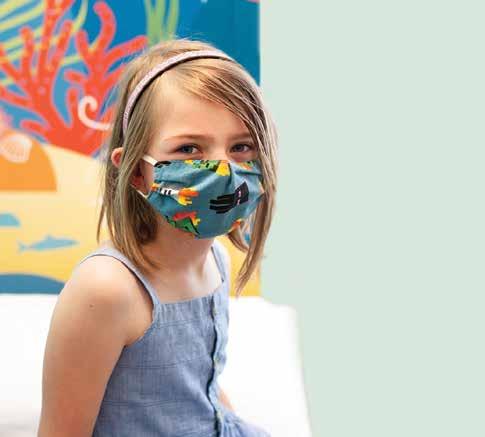


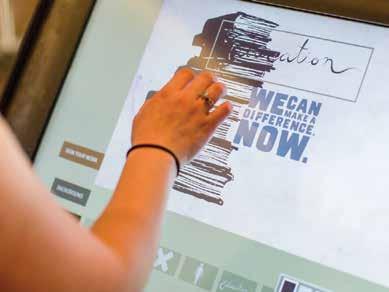





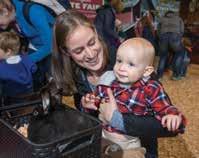






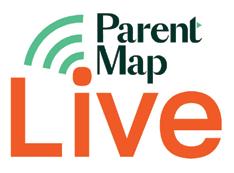
To raise fairer, kinder and smarter kids who are prepared to build a more equitable society, we have to reconsider how history and race are taught in our schools. Don’t miss this critical conversation by Khalil Gibran Muhammad and Jeffery Robinson, two of the nation’s leading scholars on race, inequality and criminal justice.


Homework Helpers: Winning Strategies to Help Your Kids Help Themselves
Supporting our children’s learning at home can be a setup for massive frustration, as we negotiate just how much to lean in. Teachers and authors Abby Freireich and Brian Platzer will share proven strategies to help kids work independently and build confidence to excel — both inside and outside of the classroom.

In Praise of Learning Differences: Shifting the Lens From Disability to Ability
New York Times–bestselling author Dr. Edward Hallowell will share his expert insights on the latest brain science behind ADHD/ADD and his strengths-based approach to identifying, developing and celebrating the talents embedded in ADHD, dyslexia and other syndromes.




Tenacity is more important than ever in preparing kids for the future. Sam Goldstein, Ph.D., and Robert B. Brooks, Ph.D., co-authors of “Tenacity in Children,” will challenge you to rethink how you parent, socialize and educate your kids so that they can successfully transition into adult life.
16, 2021
Join this interactive talk by “The Einstein of Love,” Dr. John Gottman, to strengthen your partnership and parenting. Dr. Gottman will address fundamental questions about love, trust and relationship resilience.

Dec. 1, 2021
For parents, living without a plan in place to account for all of the possible “what if” eventualities of life could have grave implications. Chanel Reynolds, author of “What Matters Most” and founder of the Get Your Shit Together website, will outline the five essential steps every parent needs to take to secure their peace of mind.

Puget Sound Preschool Preview | Jan. 8, 2022
What is a parent to do when their go-to discipline standbys bomb in the face of their child’s meltdown of epic proportions? Accentuate the positive! Sproutable co-founder and parent coach Julietta Skoog will present creative and effective strategies that work like a charm to restore calm.
2, 2022
Alison Gopnik, Ph.D., will reveal fascinating insights into how caregiving relationships in childhood and old age evolve distinctive capacities for cognition and culture. Dr. Gopnik will explain how these two developmental life stages are related, and how to nurture the relationship between children and grandparents.


Bias Interruptus: How Parents Can Support Anti-Bias Education at Home and in Our Schools | Feb. 16, 2022
As parents, how can we proactively confront our own biases in order to best support our students in learning and fostering anti-bias skills? Dr. Scotland Nash, regional director of education at Anti-Defamation League, will share practical and powerful ways to start and maintain an ongoing dialogue with your kids.
Puget Sound Camp Fair | March 5, 2022
Living Like a Citizen: Raising Leaders in a Complicated World
In a society that is frequently rocked by tragedy, intense social unrest and political division, how can we help our kids process the upheaval and learn to “live like a citizen”? Citizen University co-founder and CEO Eric Liu outlines his inspiring vision and shares how parents can model responsible leadership and community service.

Peaceful Parenting: Aha! Breakthroughs for Your Toughest Parenting Challenges | March 22, 2022


Are you desperately seeking that magical aha! epiphany that will help transform your child’s problematic behavior (or maybe your own)? Dr. Laura Markham of Aha! Parenting will share her empowering wisdom for handling the trickiest behavioral challenges — all in order to cultivate a more peaceful home.




IntraConnected: How a Sense of Belonging Shapes a Child’s Development | April, 2022
Many aspects of modern society push our kids to live an isolated life. Renowned author Daniel Siegel, M.D., will explore how the collective power of community and an engaged parenting style help our children connect to who they are.
How to Win at Parenting Without Losing Yourself | April 19, 2022
Dr. Whitney Casares, aka Modern Mommy Doc, will share her blueprint for what it means to be a successful working mother, finding balance and personal satisfaction in both our roles as parents and professionals. Learn practical and actionable tips for breaking the cycle of burnout in parenting to experience greater joy.
The ‘Yes Brain’: Coaching Our Kids From Reactivity to Receptivity | May 3, 2022
When facing challenges, unpleasant tasks and contentious issues, children often act out or shut down, responding with reactivity instead of receptivity. Author Tina Payne Bryson, Ph.D., will discuss positive strategies for creating “Yes Brain” opportunities that allow your kids to thrive — both now and as they grow into adulthood.

Back by popular demand, authors Nate Klemp, Ph.D., and Kaley Klemp will impart several key insights and tools of their 80/80 marriage model, including how shifting from a mindset of being 50/50-fair to one based on radical generosity alleviates mental overload syndrome, leading to a happier and more intimate relationship.
Screen-Time Reset: Expert Guidance for a Healthier ‘Media Diet’ for Kids | June 7, 2022
Dr. Dimitri Christakis, director of Seattle Children’s Research Institute’s Center for Child Health, Behavior and Development, will reflect on his landmark research on the impact of a “media diet” on children’s development, providing a blueprint for how parents and educators can close up gaps in education attainment and rebalance screen time.
For over 100 years, Seattle Children’s has been dedicated to compassionate care and groundbreaking research, so every kid can have the healthiest childhood possible. Because it’s not about beating the odds. It’s about changing them. For all kid-kind. SeattleChildrens.org


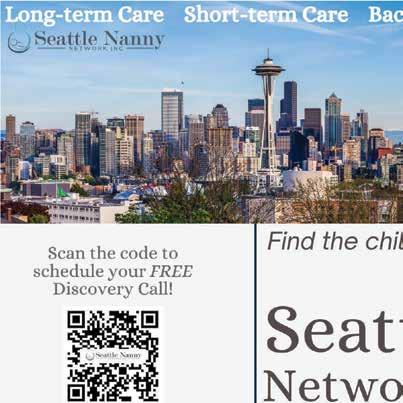
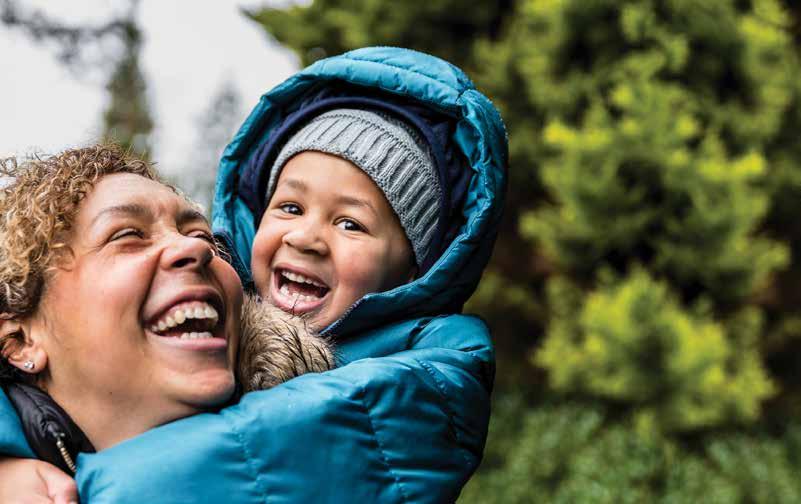
Some said Isaac had a 50/50 chance of survival. But tell that to this thriving little guy.
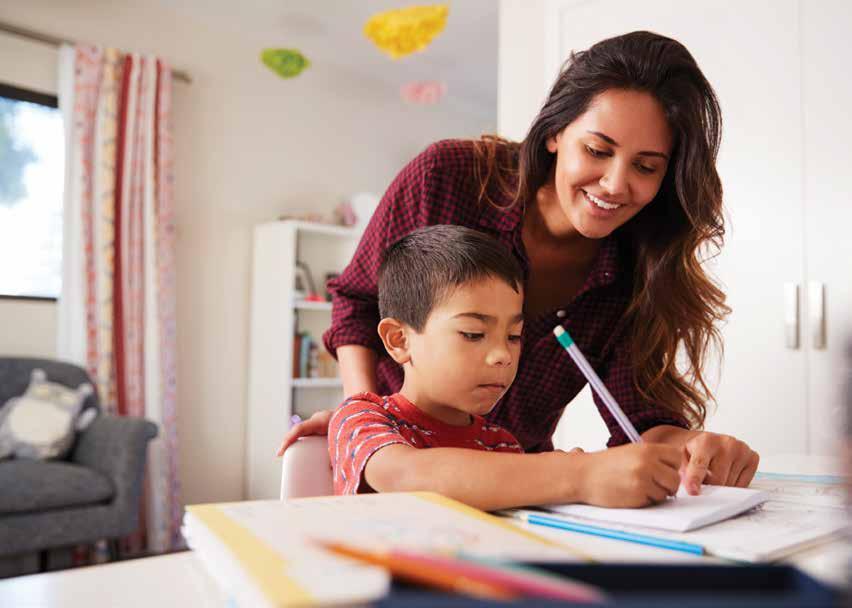
After 18 months (and what feels like a quadrillion Zoom classes), our kids are returning to school, that once-familiar and yearned-for social and learning landscape. We’re all experiencing a mixed bag of emotions about the return to in-person
instruction: Depending on the day and the news cycle, our relief and excitement can quickly lose in a tug-of-war with fear and uncertainty. What is certain, however, is that we all — kids, parents and teachers alike — have a newfound appreciation for




The best time to see a doctor is now. Regular doctor visits are one more way to keep you and your family healthy, and now’s a perfect time to schedule an appointment at PacMed. We’ve added more doctors to our diverse team for in-person and virtual visits and have hours that fit your busy life. Keep yourself and your family healthy at PacMed.org.
continued from page 11 learning in person.
ParentMap reached out to Abby Freireich and Brian Platzer, co-directors of NYC Teachers Who Tutor (nycteacherswhotutor.com) and co-authors of the indispensable guidebook “Taking the Stress Out of Homework,” to seek their expert advice for navigating this momentous back-to-school transition — and for reassurance that the kids are going to be alright.
It’s been nearly two years of remote schooling or start-and-stop in-person instruction. How can I make sure that my kids catch up to where they should be?


Nearly all parents are concerned that their kids didn’t learn nearly as much as they would have pre-pandemic, or that they have fallen behind academically. First and foremost, it is the job of the teachers to ensure that students are “where they need to be” academically by the end of this school year, and what that will mean this year. Teachers will need to thoroughly assess their students’ skills across subjects at the beginning of the school year before jumping into new topics, and reevaluate their curricular focus accordingly. Many students will need to spend more time shoring up skills from the previous year before delving into new material.
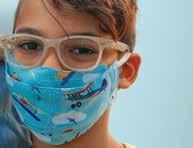
If you’re concerned about “catching up,” check in with your child’s teacher from last year or their teacher for this school year to see if they have specific recommendations. While there’s no “one size fits all” answer, in general, we recommend that your child read (or that you read to your child or do shared reading) on a daily or almost daily basis. If your child could use practice with reading or with math skills, repetition is key. It’s better for them to do 20 minutes a day, for example, than work for a couple of hours straight one day.
When it comes to preparation, though, the best advice you can give your child is to encourage them to ask questions, whether they are curious, confused or need clarification. Sharing with your children the importance of self-advocacy and speaking up as active participants in the class is key to helping them stay engaged, understand the material and also help their classmates in furthering the class discussion with their line of inquiry. Asking questions is the sign of an active learner.
How will this school year be different from past ones, pre-COVID-19?
The reality is that none of us knows for sure. Our hope, of course, is that 100 percent of schools will be open for in-person learning and that students younger than 12 will be able to be vaccinated sooner rather than later. In all likelihood, most students will be masked for much of the year, which may continue to make it more difficult for young children to read emotion, and challenging for teachers with large class sizes to be able to tell if their students are confused when they don’t feel comfortable raising their hand. This is why speaking up and asking questions in class discussions is more crucial than ever before.
to assess and reassess each student’s unique set of needs to gauge how they are doing.
How can I prepare my child for social reintegration at school after so much time being remote over the past year?
The best way to prepare your child for social reentry is to have them engage in activities with other children on a regular basis, wherever possible. Setting up playdates or small social gatherings can also help them to reestablish an in-person rapport with friends and classmates. Before the school year starts, giving them opportunities to interact with peers is essential so they can feel more confident and happier about the return to school. Participation in group activities will provide them with an opportunity to collaborate and practice conflict resolution, skills that will be invaluable both in and out of the classroom and for years to come.
How can I get my child to be less addicted to screen time, which has been a mainstay of their existence for the past year and a half?
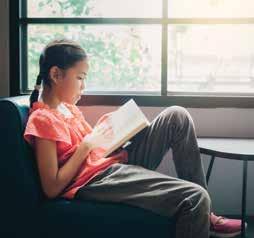
Oct. 2, 2021
Register at parentmap.com/eduexpo
What do we know for sure? This year will bring with it a recalibration of “back to normal,” while reestablishing what “normal” is in the first place. As children try to adjust to the unique rhythms of a new school year, teachers and parents will need to be keenly attuned to how children are doing psychologically, socially and academically. Some students will need more work with foundations that might not have been as firmly reinforced during challenges of remote learning, while others may be ready for new material. Some kids will be relieved to be back to school in person to see their friends and have classes in person, while others might be worried about the social dynamics of school. So, teachers will need
We can’t tell you how many parents have asked us this question. The biggest change for most children this school year will be the shift from remote school to in-person learning. Because technology has been necessary both for attending school and maintaining connections with friends, setting limits has been fraught, at best, for most parents. This next school year will hopefully be different: In-person learning means that technology will no longer be the sole means through which kids can attend school and interact with their friends.
We recommend discussing technological expectations a couple of weeks before school begins. Be honest with your children: The past couple of years have been incredibly difficult, and now that they will be in school and seeing their friends, it’s time to recalibrate. Set expectations and limits in advance, and then be consistent
about sticking with them. In general, we recommend completing homework before screen time and giving kids more time for screen use over the weekend. Using screen-time limits on devices can help minimize potential tensions. Establish the ground rules and then allow them to have freedom and control within those limits. The point is not to punish your children, rather to give them an opportunity to reengage in the real world through socialization and academics in person. ■
Abby Freireich and Brian Platzer are founders of NYC Teachers Who Tutor (nycteacherswhotutor.com) and coauthors of the book “Taking the Stress Out of Homework.” They write the education-themed “Homeroom” column for The Atlantic and frequently contribute to The New York Times.
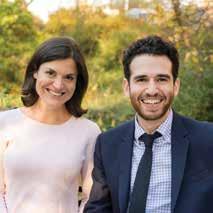 FREE ParentEd Talk by Abby Freireich and Brian Platzer
FREE ParentEd Talk by Abby Freireich and Brian Platzer




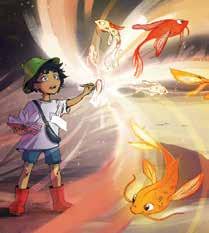





National Association for Music Education • nafme.org



This organization holds four competitions each year. For kindergartners through college students, there are the Student Composers Competition for ensemble or orchestra (April deadline), and Electronic Music Composition Competition (April deadline). For K–12 entrants, there are the Student Songwriters Competition (April deadline) and the All-National Honor Ensembles for performers (September deadline in 2021; for most years, the deadline is in May). Submission requirements vary, and prizes include cash, written critiques and professional recordings of submitted compositions.
National Young Composers Challenge • youngcomposerschallenge.org
The National Young Composers Challenge encourages teens 13–18 to compose a classical work for ensemble or full orchestra. There is no fee to enter. The submission deadline is Oct. 1, and winners are announced in April. Winners earn a recording of their score performed by professional musicians of the Orlando Philharmonic Orchestra. In addition, ensemble winners receive $500; orchestra winners receive $1,000.
American Protégé • americanprotege.com
American Protégé holds seven different international musical performance competitions each year: Piano and Strings, Concerto, Romantic Music, Music Talent, Vocal, Woodwinds and Brass, and We Sing Pop! All
of these competitions are open to all ages (judged in age categories). Deadlines fall in the winter months of October–February. At $200, the entrance fee is high. Awards include a $300 scholarship, trophies and an opportunity to perform at Carnegie Hall.
Unsigned Only • unsignedonly.com
If your kid is looking to take their garage band to a bigger venue, Unsigned Only taps famous pop stars to judge original and cover songs in more than a dozen popular genres and categories. Early-bird submission in September is $25, escalating to $35 by the April deadline. Prizes range from merch and video production all the way up to $20,000 and a chance to make a pitch to record label executives. ■
Fluency in two languages could be a major benefit to your child’s cognitive development, and when it comes to becoming bilingual, starting young is key. Learning a second language is practically effortless for most children ages 2–5, because their brains are still in the habit of mimicking new sounds. From those young ages through preadolescence, a child has time to practice a new language through play-based and immersion learning.
The following are just five of the many reasons why learning a second language is beneficial to a child’s ongoing cognitive health and development.

Learning a second language has been shown to strengthen cognitive and linguistic development in children. In order to balance between two languages, a bilingual brain is constantly flexing its executive functioning. This ongoing mental exercise in attention translates to increased focus, better conflict management and a heightened ability to multitask.
Knowing two or more languages has been linked to developing a better working memory — that is, an individual’s ability to store and process information over a short period
of time. A good working memory means increased focus and understanding during complex activities, such as mental calculations and reading comprehension. Ages 5–7 are critical years for honing working memory skills, pointing to another reason why preschool is an ideal time to start teaching a child another language.
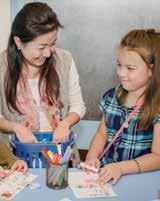

Learning a second language also encourages a heightened sense of linguistic awareness when it comes to nuances in a language’s structure, grammar, etc. — an important skill for reading, writing and holding a conversation. Additionally, a more sophisticated understanding of language makes it easier to pick up a third or fourth language later on.
A bilingual learning environment provides an important level of diversity. Exposing children to a diverse learning environment can encourage a message of community, understanding and respect, helping to create cultural awareness and fluency in a global context. The confidence and worldliness kids will develop by learning a second language will prove to be an asset in all settings.

Since we are living in an increasingly interconnected world, career opportunities multiply for those who know more than one language. So, while learning a second language might be fun and games for your toddler, she’ll thank you later on when it comes time for her to decide on a career. And thanks to the better executive control it promotes, bilingualism has been proven to protect against dementia, Alzheimer’s disease and other age-related conditions related to cognitive decline. Compared to older monolingual individuals, elderly bilingual speakers typically have better memory and overall executive control. In short: A bilingual brain seems to stay sharper, longer. ■
— Aurélie McKinstry and Nicole Persun

Early in the 20th century, a young Italian doctor began working with children considered to be “uneducable” and found that those children could thrive if they were given the right environment. This doctor, Maria Montessori, would spend years observing such children: When did they show the most focus? When was their concentration the highest? What activities fostered their autonomy? How did routines and order affect their learning?
These were the observations that gave rise to the Montessori method and to the publication of Montessori’s book “The Discovery of the Child.” Her teachings continue to shape learning to this day. Several studies have found that children who receive a Montessori education demonstrate high creativity, more advanced social skills and a heightened sense of justice.
The good news is that some of the principles of the Montessori philosophy are easy to apply at home. Here are five Montessori mantras every parent can employ.
While observing the children in her care, Montessori found that the children thrived when they were given the tools to succeed by themselves. She found that when they were allowed to work independently, they became more self-reliant and more self-motivated. That is why she advocated for child-size tools and equipment that kids can easily manipulate by themselves.
How to employ Montessori methods at home:
• Ensure your child is able to dress by themselves (no zippers or shoelaces for
younger kids, and appropriate zippers and laces for older ones). There are also easy tricks you can use to help your child put on their coat independently.
• Show your child how to do age-appropriate chores, then let them do those chores alone. Also, you can teach your child how to shower by themselves, with some help at the beginning, then alone as they grow older.

• Limit the number of things you do for your child if they are perfectly capable of doing those things by themselves.
Many people falsely believe that a Montessori education is about giving kids too much freedom, letting them do whatever they want. Nothing could be further from the truth. “Freedom within a structure” is one of the key principles that underpin the Montessori method. What this means for parenting is that your child needs a structure within which to act.
What your child needs to know:
• What is expected of them and the consequences of failing to meet those expectations
• The limits they must respect
• Your behavior expectations, including what is negotiable and what is not
• That freedom comes with responsibility
We now know that a child’s interest is a decisive factor in determining their behavior. Interest determines their concentration, their self-motivation and even what they remember or fail to remember.
How to help foster your child’s interests:
child to participate in decision making and remember that even young kids benefit from being allowed to voice their thoughts.
After years of observing many children in different settings, Montessori found that the more interested kids were in what they were doing, the more likely they were to show focus.
• Focus on your child’s strengths. Deepak Chopra once said: “If a child is poor in math but good at tennis, most people would hire a math tutor. I would rather hire a tennis coach.” This is a powerful message, because as parents, we often tend to focus more on our child’s weaknesses rather than on their strengths. Remember that it is more important for your child to feel successful in something, even one thing, than to feel like a total failure in everything.
• Your child is more likely to stick to something if they feel that they had a say in choosing that something. Encourage your
If you show your child that you believe they can succeed, they will believe you. If you show them that you believe they can’t, they will believe that, too. As editor and writer Peggy O’Mara noted, “The way we talk to our children becomes their inner voice.”
Montessori believed that how we perceive our children influences their sense of self. She said that a child needs to feel like they matter, and that it is our role to ensure that they do.
‘To give a child liberty is not to abandon him to himself.’
‘As soon as children find something that interests them, they lose their instability and learn to concentrate.’
‘The child builds his inmost self out of the deeply held impressions he receives.’





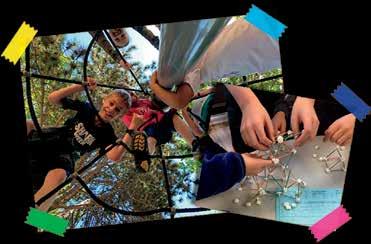
continued from page 18
Here are a few things you can do to show your child that they mean the world to you:
• Make it a habit to ask for your child’s opinion. This shows them that their opinion matters, even if it differs from your own.
• Take an interest in your child’s interests.
Demonstrate to them that you like hanging out with them.
• Be careful of the labels you use to describe your child: There’s a world of difference between describing your child as a “scaredy-cat” or as someone who is simply “cautious.”
child to adopt. Actions speak louder than words.
• Encourage make-believe play as a fun and easy activity to help your child learn.
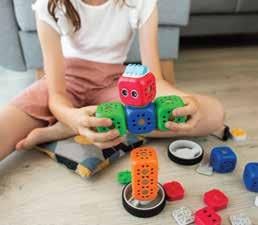
• Let your child help. Giving them age-appropriate chores is a great way for them to learn, and it also helps build their sense of success.
Like many other education philosophers, Montessori believed that children learn best when they are active observers and when they have opportunities to put into practice what they have learned.
Here are easy tips you can practice from the Montessori philosophy:

• Model the behavior you would like your
One of Montessori’s greatest discoveries was that children thrive when they are allowed to participate in everyday activities. In other words, giving your child age-appropriate tools, age-appropriate chores and freedom within a structure will make a world of difference in their development. ■
Sanya Pelini, Ph.D., transforms educational research into practical tools and resources on her blog Raising Independent Kids (raising-independent-kids.com).




‘Imitation is the first instinct of the awakening mind.’
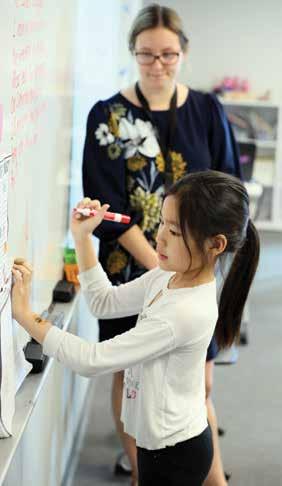















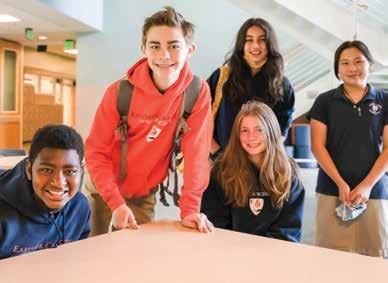




















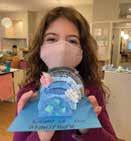


Life with kids is always a bit chaotic, but there’s nothing like the pandemonium of back-to-school season. It’s easy to get buried in an avalanche of homework papers, art projects, library books, sports gear, kitchen messes and more — but never fear! We’ve rounded up a list of tips, tricks and products to help you dig yourself out of the clutter.
Tip 1: DIY — with a little help from the kids
The beauty of do-it-yourself solutions is that they’re thrifty, eco-friendly and fun. Involve the kids in the process, and they’ll be all the more excited to use the final product. From laundry-sorting systems to cord organizers, our list of DIY organizational ideas is sure to help you get back on track. parentmap.com/DIY

Tip 2: Ikea to the rescue!
Whether your kids are attending school virtually or need a killer homework station, Ikea has your back. From minimalist desks to cute lamps, we’ve curated a list of affordable and functional products to foster learning (parentmap.com/IKEA). Want to bring Ikea into the rest of the house? Consult our list of nifty picks for household storage solutions at parentmap.com/storage.

We have a great list of tips and gear to make your homework stations that much more organized. Just make sure you consult the kids when customizing their learning space. This will help them feel excited and invested in keeping the space tidy. parentmap.com/workstation
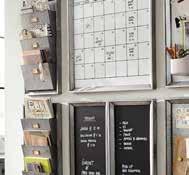
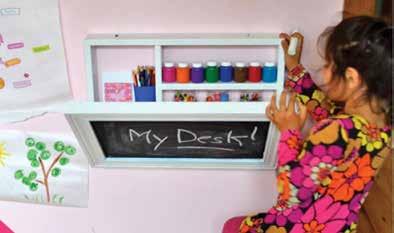
Tip 4: Make it stylish
Practical doesn’t have to be boring. Cute wall organizers help harness mail and keys in your entryway; sleek storage systems hide toys; and beautiful baskets contain pretty much any clutter you can think of. Want to see some specific products? Peep them at parentmap.com/style.
Tip 5: Love the home you’re with If only we had a bigger kitchen. If only the kids didn’t have to share a bedroom. If only, if only, if only. ... If you find yourself getting caught up in how your home compounds the messiness, take a deep breath and try simplifying your space. From curating kids’ art to getting a handle on kitchen clutter, we’ve got a great list of practical solutions to help you make your home life better at parentmap.com/simplify.
Without a change in your family’s mindset, all the clever organizational systems in the world are sure to fail. That’s why it’s important to work with your kids on creating new habits around wellness and productivity. Habit tracking works wonders for schoolage kids and parents alike — our five-step guide can get you started. parentmap.com/habits
Tip 7: Go green!
Even if you only have the energy to make a small change, developing eco-friendly habits is not only great for the environment, they can help simplify your home organization system, too. Switching from a million bottles in the bathroom to a shampoo and conditioner bar helps cut down on plastic and clutter. Reusable snack pouches keep kids’ lunch boxes orderly. And sustainable clothing brands keep your family feeling fashionable while cutting back on waste. Consult our list of awesome eco-friendly products at parentmap.com/gogreen. ■


Nicole Persun is an award-winning novelist, a writing instructor and the digital content production coordinator at ParentMap.
Sponsored by
Flyhomes helps people buy homes they love with less stress and more celebration along the way. Experience next-level teamwork and door-opening financial products that help buyers stand out in competitive real estate markets. flyhomes.com
Flyhomes is a simpler, faster way to buy the home that’s right for your family. Move once and avoid extra costs when you buy your next home before you sell your old one.


the big plastic jug in favor of dissolvable laundry pods!
Check out many more happenings online at parentmap.com/calendar.
After our hot and dry summer, many of us will appreciate fall’s cooler weather.
September offers the opportunity to wring the last bits of fun from summer while welcoming all the crisp goodness that fall brings. Read on for 15 terrific family events, from classic fests and fairs to quintessential fall traditions, that are sure to make memories during your September days.

1. Enjoy photo ops, hayrides (on weekends) and endless blooms of sunshine in the fields at Bob’s Corn Sunflower Experience Plan to return later in the month for Bob’s annual Fall Festival, which features pumpkins, a corn maze and more. Sunflower Experience through Sept. 17; $13–$18 per person. Fall Festival begins Sept. 18; $15–$20 per person. parentmap.com/sunflowers
2. Close out the summer fair season with a bang at the largest one of all, the
Washington State Fair All the traditional fun and amusements will be back this year, so count on a day jam-packed with rides, fair food and entertainment. Daily, except Tuesdays and Sept. 8, Sept. 3–26. $11–$16; 5 and younger free. parentmap.com/the-fair
3. Go on an art-filled adventure at Lake Sammamish State Park. Admire 10 local artists’ sculptures set up near the kitchen shelter, on view from dawn to dusk. Daily through Sept. 16. Free. parentmap.com/art-park
4. Photo ops and outdoor fun abound at another sunflower festival, this one at Maris Farms in Buckley. Snap the perfect shot, pick sunflowers to take home and enjoy farm activities. Saturday–Sunday, through Sept. 19. $16–$18; ages 2 and younger free. parentmap.com/maris
5. Build your own Lego tugboat, watch Lego pros build their own tugs and vote for your favorite display model at Olympia Harbor Days Lite. Saturday–Sunday, Sept. 4–5. Free. parentmap.com/harbor-days

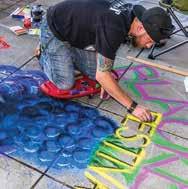
Washington State Fair Events Center, Puyallup parentmap.com/the-fair
6. Celebrate the berry of the hour with more than 15 blackberry-themed foods, live music, vendors and more at the Bremerton Blackberry Festival. Free entry, items for purchase. Saturday–Monday, Sept. 4–6. parentmap.com/blackberries
7. Cruise on over to a truck lover’s paradise at Pierce County’s Touch A Truck event. Kids are encouraged to climb on, explore and honk the horns of many of the “celebrity” big rigs they see on the roads. Saturday, Sept. 11, 10 a.m.–1 p.m. Free. parentmap.com/truck
8. Plan a day of giving back during Garden Stewardship Day at Magnuson Children’s Garden. Use a little elbow grease to help make this child-focused nature sanctuary sparkle. Saturday, Sept. 11, 10 a.m.–2 p.m. Ages 6 and older with families. Preregister. parentmap.com/garden-day
Northwest Railway Museum, Snoqualmie parentmap.com/thomas
Sept. 23 |
ParentMap Live: Learning From the Past — Why Educating Kids on Race Matters
Virtual event parentmap.com/live
for picking on this side of the mountains. parentmap.com/apples
11. Visit a favorite or new-toyour-fam museum for free on Smithsonian Magazine Museum Day. The Museum of Flight, National Nordic Museum and historic Fort Steilacoom are included on this year’s list. Saturday, Sept. 18. parentmap.com/smithsonian
School, and Jeffery Robinson, founder of The Who We Are Project, on why educating kids about race really matters. Thursday, Sept. 23, 1 p.m. $0–$15. parentmap.com/live
9. You have one more chance to meet the “real” Thomas the Tank Engine at the Northwest Railway Museum. Go for a ride in a train car pulled by Thomas while picking up party favors and playing games at stops along the way. Saturday–Sunday, Sept. 11–12. $24–$28; ages 1 and younger free. parentmap.com/thomas
10. Plan a day of harvesting the delicious fruit Washington is famous for, apples! Although most of the official state fruit grows in eastern Washington, there are some farms open
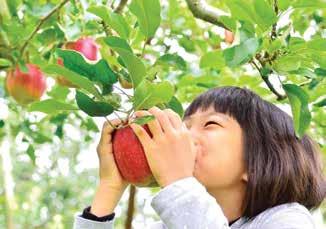
12. Gaze at the breathtaking and colorful air displays and bring your own kite to fly at the Whidbey Island Kite Festival. Stick around for kids’ kite making, professional kite competitions and demos, plus a teddy bear drop at 1 p.m. each day. Saturday–Sunday, Sept. 18–19. Free. parentmap.com/kite-festival
13. ParentMap invites parents and educators to join an important discussion with Khalil Gibran Muhammad, professor of history, race and public policy at Harvard’s Kennedy
14. Inspired by the open-air night markets popular in many Asian countries, Seattle’s Chinatown–International District Night Market welcomes all for shopping, crafts, live performances and delicious street food. Saturday, Sept. 25, 1–9 p.m. parentmap.com/night-market
15. Spend a day by the water on the gorgeous grounds of The Center for Wooden Boats during its Lake Union Wooden Boat Festival. Get your fill of boats, boat races, workshops and more. Saturday–Sunday, Sept. 25–26. Free. parentmap.com/wooden-boats ■
Devon Hammer is ParentMap’s Out + About editorial assistant and a mother of two.
The Washington State Department of Health (DOH) reports that there has been a sharp drop in standard vaccinations since the onset of the COVID-19 pandemic in 2020, as many kids have missed out on routine doctor’s appointments. The agency is taking time this summer and fall to remind parents and guardians to get back on track with required immunizations as well as important well-child visits and physicals, a vital step in readying children for the new school year.
The importance of regular visits to healthcare providers
State laws already govern vaccine requirements for school and child care enrollments, so the seasonal timing of the message isn’t necessarily unique. Michelle Terry, M.D., a clinical professor in the Department of Pediatrics at the University of Washington School of Medicine, encourages families to avoid the mad rush at the start of the school year by scheduling checkups now.
“Making an appointment with the doctor might require a four- to six-week lead time,” says Terry. “In getting kids ready to get vaccinated and start school, folks need to make appointments now. A lot of people make their well-child appointments in the summer because kids generally have more flexibility in their schedules.”
Families may have fallen off a fixed wellchild schedule for a variety of reasons, she notes. A year ago, many doctor’s offices didn’t want more people than necessary
showing up for care, and practices pivoted quickly to offer telemedicine services. At the same time, many families didn’t want to risk exposing themselves to the coronavirus, deciding to forego physicals and routine exams in favor of the safety of staying home. “It went both ways, given how busy folks were and are,” says Terry.
Though the evolving virus still holds a tight grip over many facets of normal life, the medical and health-care landscape looks decidedly different this year, with COVID-19 vaccines now readily available for those ages 12 and older. While DOH’s vaccination reminder isn’t specific to the COVID-19 vaccines, Terry emphasizes the similarity between the desired result of COVID-19 vaccinations and other childhood immunizations: “When you get vaccinated, you and your children are protecting yourselves and your community.”
Even if paper copies of immunization cards or records have been misplaced, any vaccines your family members have received within Washington state most likely have been recorded in the state immunization registry. Parents can sign up for free to access their family’s immunization records at MyIR (wa.myir.net), the state registry’s consumer portal. Information about immunizations can then be easily shared at the parent or guardian’s discretion with schools, child-care providers and athletic clubs. Families can also manage their schedules
and coordinate future recommended immunizations with their health-care provider based on forecasting information, which is also displayed in the MyIR application.
What standard vaccinations does my child need for the 2021–2022 school year?
The DOH outlines the state’s list of required immunizations for school or child-care enrollment. “Kids need five vaccines going into kindergarten, and that should cover them until seventh grade, when they’ll need one additional vaccine. But kids can catch up on missing vaccinations at any age,” notes DOH Immunization Health Educator Danielle Koenig. The DOH also publishes an easy-to-understand schedule of required immunizations for each school year on its its website (doh.wa.gov/vaxtoschool).
Parents should confer with their child’s doctor about other vaccines that might be required, too — not just those needed for school. “Kids attending child care need additional vaccines, and others are recommended to keep your child protected from other serious diseases. For example, kids ages 9 and older can get the HPV vaccine, which prevents several types of cancer,” says Koenig.
There’s never a recommendation to start over a vaccine series, Koenig notes. “If your child got behind because you were staying home during the pandemic or didn’t know what they needed during remote school, that’s fine. If you aren’t sure if they have
vaccines due, that’s fine, too! Don’t be afraid to ask. Your child’s provider will be able to tell you what they need and when. They’ll know whether they’re still able to follow the regular schedule, if they need the catchup schedule, or if they’re all caught up,” says Koenig.
The many types of immunizations recommended for children can understandably give rise to questions about vaccines or even confusion about the immunizations schedule. Koenig says that while the DOH campaign is about reminding families to catch up on missed shots from the past year and a half due to pandemic-related changes and issues, the most important thing is that parents and providers have an open communication between them where factual information can be shared and parents’ questions addressed.
“The decision to immunize your child is an important one. We want parents to make informed health-care decisions based on accurate information. There is an overwhelming amount of vaccine-related material out there, and we know that parents want information that is trustworthy and clear. Your child’s doctor can answer any question you have, whether it’s about the schedule, the safety of a vaccine or what vaccines do. Don’t hesitate to ask them!” says Koenig. The Department of Health website is a tremendous resource for parents hoping to better understand and navigate immunization topics, requirements and recommendations.
“Of course, parents want to do what’s best for their children. Overall, what we want parents to understand and feel confident about is that vaccination is very safe and effective. Immunizations have saved millions of lives, and prevented illness and disability for millions more,” says Koenig. Terry adds, “Serious side effects following vaccination, such as severe allergic reaction, are very rare. The disease-prevention benefits of getting vaccines are much greater than the possible side effects for almost all children. We have vaccines because there are not effective and efficient treatments for many of the diseases that vaccines prevent.”
While catching up on primary and preventive healthcare services is more essential than ever, getting ready for a new school year involves more than simply getting immunizations. In taking stock of all the challenges that families have faced over the past 18
continued from page 29

months or so, Terry says there are a few things parents and guardians can prioritize and work on starting now and into the fall:

1. Stick to a routine and schedule. “Everyone does better with a schedule,” she says. “Kids can experience anxiety when you don’t have any plans at all.”
2. Though pandemic precautions still put a damper on some freedoms, encourage kids to stay active and engage safely in as many activities as possible, for their physical and mental well-being.




3. Offer lots of encouragement and listen to children’s concerns, while at the same time helping them to problem-solve solutions. “Self-advocacy is an essential skill that children need to develop to succeed in school settings.”
4. Get involved right at the beginning. Set out to develop and maintain a strong line of communication with teachers when school resumes. Respect teachers’ boundaries, but ensure any longer conversations that need to take place can be done by phone. Get a hold of schedules, learn from teachers how classroom routines are expected to work and get an outline for curriculums.
5. Terry saves perhaps her best tip for last: Embark on the new school year positively. “Expect the best, begin with a positive attitude and follow through with that.”
Find more “Vax to School” resources at doh.wa.gov/vaxtoschool. ■
April Chan is a journalist based in the Seattle area.


Sponsored by



The Department of Health works to protect and improve the health of all people in Washington state by leading changes in policies, systems and environments to prevent illness and injury; promoting healthy families and communities; encouraging healthy lifestyles; and focusing on places where people live, learn, work, recreate, seek health care and worship.



Less than an hour from Seattle, this revamped recreational area has something for everyone
By Jennifer JohnsonIt’s rare that a whole new recreational area opens up within an hour’s drive of Seattle, but that’s just what happened recently along the Middle Fork Snoqualmie River. The road out of North Bend that meanders up the Middle Fork River Valley used to be notorious for its potholes, drug camps, illegal shooting and other nefarious behavior.
But a coalition of government agencies and nonprofits worked together to clean it up, pave the road and refurbish trailheads. The result is a family-friendly adventure zone along a designated Wild and Scenic River corridor, offering a bit of something for everyone. If you’re looking for a destination that’s close to home and low in elevation — yet with gorgeous
views and forests — then you’ll love this four-season spot.
There are a few things to be aware of as you plan your trip. The Middle Fork Road isn’t plowed during the winter, so it can be impassable during periods of low-elevation snowfall. The surrounding peaks hold the snow into the spring, and it can be as much as 10 degrees colder in the valley than it is in town. It can also be rainier here than in other areas, so be prepared with rain jackets and good shoes. There are two different government agencies caring for the land; make sure you know which parking pass to have in your car. And I always recommend checking recent trip reports from the Washington Trails Association
continued from page 31




(wta.org) to be sure the trail is open and safe for kids. There is no cellphone service in the valley.
Oxbow Loop
The 2-mile Oxbow Loop Trail is covered in hard-packed gravel, so it’s less muddy than other trails in the valley. From the large second parking lot (privy available), take the connecting trail to join the loop down toward the river. Stop a moment and enjoy the views looking over the river and across to Russian Butte. Big-leaf maples are covered with mosses and ferns, and lichens and fungi abound. A short side path leads to the river, where there are spots to sit and enjoy the view. This path is gentle enough for little legs, yet interesting for older hikers as well.
Kids will love: Looking for “octopus” trees and the huge tree stump, tromping over the bridge, throwing rocks into the river
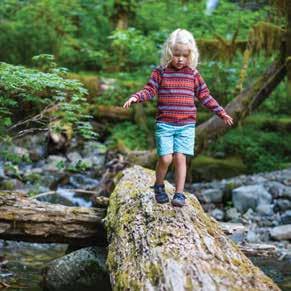
info@HibulbCulturalCenter
alCenter




org










Parents should know: The first parking lot has room for just a handful of cars, but if you drive around the bend, there is a larger parking area and a well-maintained privy. Watch for stinging nettles and mosquitos in the spring and summer. A Discover Pass is required to park.
Camp Brown ADA Trail
Once a logging camp, then a boys’ camp and finally a guard station, this forested spot next to the river has now recovered. In 2020, it was opened as an accessible walk for all ages and abilities, in compliance with
the Americans with Disabilities Act. The 0.45-mile Camp Brown trail loop is a hard-packed gravel path. Visitors enjoy lush forest and views of mountains and the river. Eleven ADA-compliant picnic tables with charcoal grills are scattered along the path. A ramp furnishes access to the river’s edge.
Kids will love: An easy hike, looking for moss and fungi, playing by the river


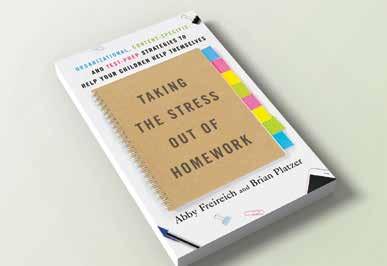
Parents should know: Wheelchair-accessible outhouses are at the trailhead parking area. You’ll need a Northwest Forest Pass to park.
Beginning from the large Middle Fork trailhead and picnic area, the Pratt River Connector Trail crosses the Middle Fork Snoqualmie via a gorgeous, sturdy suspension bridge. Turn right after crossing the river (the way to the left is blocked by a landslide), and a new trail follows the river downstream to meet up with the Pratt River Trail at 3 miles. Thick moss drapes over everything, and occasional views give inspiration for future trips. A bridge crosses Rainy Creek at about 0.6 mile, where water tumbles over mossy boulders. There are a few short climbs, and the trail stays away from the river for the most part, but there are plenty of interesting things to see.
Kids will love: Smaller stream crossings, finding a cave, looking for moss and fungi.
Parents should know: During times of heavy rain or snowmelt, a couple of the stream crossings might




cause wet feet. There can be a lot of mud on this trail. There are outhouses and picnic tables at the parking area. You’ll need a Northwest Forest Pass to park.
Completed in 2019, the Garfield Ledges trail climbs 830 feet in 1.1 miles to a spectacular viewpoint. On a clear day, hikers can look west down the Middle Fork Snoqualmie valley while admiring neighboring peaks. Though the trail climbs steadily, it’s well graded, and there is less mud than on other local paths. A set of stairs marks the halfway point, where there is a viewpoint for those who want to turn around. Families looking for more adventure can try hiking up just before sunset, staying for the view and then hiking down by headlamp.
Kids will love: The feeling of accomplishment from climbing a mountain, watching hawks and ravens soar below the viewpoint



Parents should know: There are picnic tables and outhouses at the trailhead. You’ll need a Northwest Forest Pass to park. Also note that the pavement ends just before the trailhead, and as of this writing, there are car-eating potholes that will cause problems for low-clearance vehicles. If you drive a lower car, consider parking at the Middle Fork trailhead and taking the Middle Fork Connector Trail over to the Garfield Ledges trailhead. That will add 1.8 flat miles to your round-trip total, and there are some places to access the Taylor River along the way.
Walk through dark and verdant forest along an old road bed to a picturesque bridge over the tumbling rapids of Marten Creek. The Taylor River is always within earshot, though you’ll rarely have access to it. The Taylor River Trail is well shaded for most of its length, which is refreshing on a hot day, but also means it holds the snow in the winter. There are a few campsites along the river for backpackers. Birdsong fills the forest in spring, and fungi can be found in the fall. Marten Creek is 3 miles (and 500 feet in elevation
gain) from the trailhead, making it an excellent turnaround spot for families, but ambitious hikers can continue on to Otter Falls, which makes the hike an 11-mile round trip.
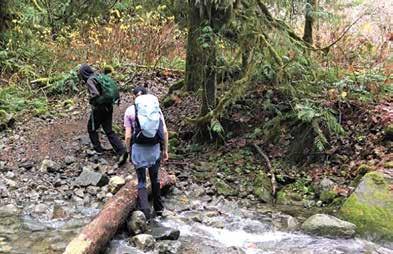
Kids will love: Multiple stream crossings, walking on a wide path, looking for wildflowers and fungi
Parents should know: The trailhead, referred to as the Snoqualmie Lake trailhead on the posted sign, is at the very end of the Middle Fork Snoqualmie Road. After the road passes the Middle Fork Campground, the pavement ends and there are some huge potholes. Cars with lower clearance may have difficulty. There are multiple stream crossings along the trail, and some can be tricky when snowmelt is high. The closest outhouse is at the Garfield Ledges trailhead. A Northwest Forest Pass is required to park. ■
Also known as “The Hiker Mama,” Jennifer Johnson is a mother of two who writes about her family’s outdoors adventures at thehikermama.com.










 By Tiffany Doerr Guerzon
By Tiffany Doerr Guerzon

Many favorite party venues have pivoted during the pandemic to supply the same festive magic and activities in virtual formats. Here are some fun options to check out for your kiddo’s next celebration.

YMCA ‘Birthday Party in a Box’ • seattleymca.org Each party box contains 10 activity kits with all the materials you need, party hats

and even a T-shirt for the birthday kid. Themes include Super Silly Science, Construction Junction, Spa-tacular and more.
Snapology Lego party • snapology.com
A Snapology instructor leads the kids in a Lego activity — a variety of themes are available — for 60 minutes via Zoom. Party guests will need to use their own Legos for the build.
Tech Rocks gaming party • robloxbday.com
For the Roblox or Minecraft enthusiasts, Tech Rocks’ virtual party experiences include 90–120 minutes of collaborative play time facilitated by a party host. Guests can explore up to three Minecraft or Roblox worlds.
Creative Hands Art School painting party • creativehandsstudio.net
Creative Hands Art School has three options for a virtual party, each led by an art instructor: painting on canvas, fluid painting and painting on ceramics. The studio prepares the kits, and the host can distribute them to the guests beforehand.
Kids Science Labs STEM party • kidssciencelabs.com
Guests at these instructor-hosted virtual birthday parties enjoy doing their own hands-on science experiments, such as making polymers or experimenting with pressure. A volcano eruption with a countdown can be added for an additional fee!
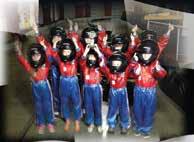


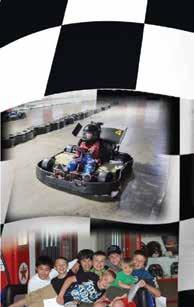
Magic party • seattlemagician.com

Seattle magician Nate Jester performs highly produced magic show birthday parties via Zoom that include a 10-minute workshop during which he teaches simple magic tricks using household objects.
The Moonpaper Tent dress-up party • moonpapertent.org
Throw a children’s dream party at home with your family by renting a Magical Party Trunk from The Moonpaper Tent. The trunk includes curated dress-up items (for the adult guests, too!), a treasure box to hide, a craft activity, extra games and a gift for the birthday kid. ■
Tiffany Doerr Guerzon is a freelance writer, the mother of three children and author of “Save Money on Groceries by Going Back to Basics.”


A recorded showcase of common and unique instruments by the musicians of LWSO.
Free for all student musicians and music educators.
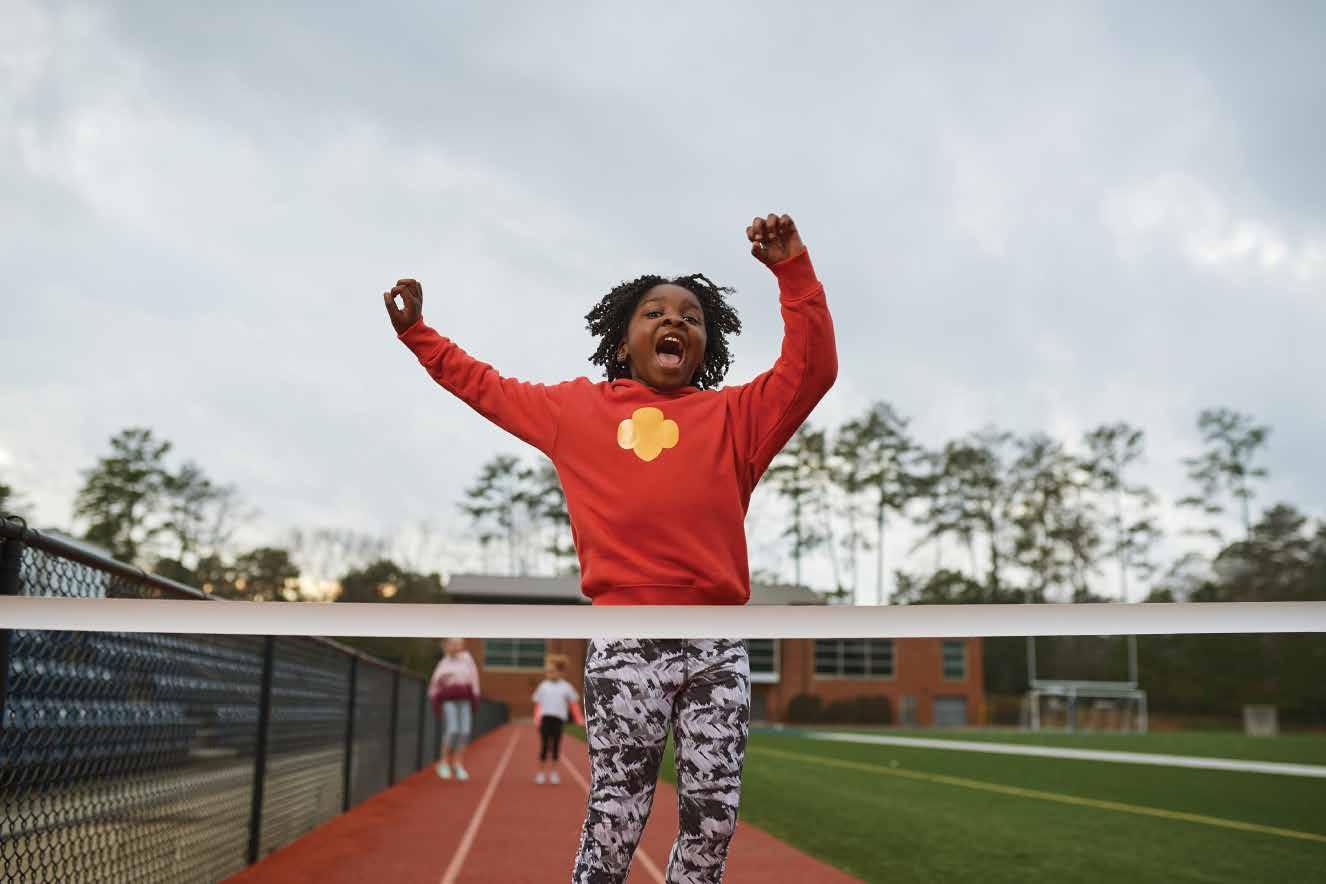
Learn more at lwso.org/education
SPONSORED BY
A local nonprofit founded by professional female athletes equips girls with the tools to be confident, centered and courageous — in sports and in life
By Tiffany Doerr GuerzonWith both Naomi Osaka and Simone Biles stepping back from competition on the international stage to take care of their mental health in recent months, the spotlight has come to focus on the extreme stress and pressures of professional athletics. Closer to home, parents may be asking what they should do to protect their own kids’ mental health when they are participating in youth sports.
ParentMap spoke with Jilyne Jarvis, cofounder and executive director of ZGiRLS (zgirls.org), a Seattle-area nonprofit founded by female Olympic and NCAA athletes, about how parents can support their kids in dealing with the pressures of youth athletics.

When things get challenging, then you push through.
But that said, recognizing when something is dangerous or not in their best interest, then [it is time to] definitely quit. It comes down to the child being able to recognize that in themselves. It’s a fine line between supporting our children to what we know they’re capable of, but it has to be driven by the child. It comes down to equipping them with the tools when they are younger to empower them to use their voice and mind. It’s about helping children to figure out their minds, just like they’re figuring out their bodies.
How can parents help alleviate the stress on their child caused by youth sports participation?
back seat; let them be the driver of their goals and dreams. When they’re driven by the parents, the athlete may go far, but it often leads to resentment.
Remember that you are the support person. And it’s also about communication: You have to keep checking in with your child. Also, for kids, it’s super helpful for them to have a mentor in their sport. It could be their coach, a teacher, a counselor or other trusted adult. Oftentimes, kids don’t go to their parents first.
How do you know when to seek professional help for your child for a mental health issue? If your gut is telling you something is wrong, seek help.
At ZGiRLS, we empower girls to recognize their thoughts and to know their minds. Athletes — and children in general — aren’t necessarily taught mental skills, whether it’s building confidence, building resilience or learning how to deal with adversity. So often we are told you’re either born with it or you’re not. That was our motivation for starting ZGiRLS. These are skills you can learn.
Under what circumstances should a parent let a kid quit their sport?
That is a tough question, as it all depends on circumstances. We do want to teach children to overcome and persevere, even when it’s uncomfortable. Even when it’s tough. That’s when growth happens:
It’s so important for parents to not tie self-worth to outcomes. To really emphasize effort and the process rather than the outcome — the goal, the score, the place. Really emphasize the growth in the process, so the child doesn’t feel all that outcome-oriented pressure. If you don’t do well in a performance, it doesn’t make you a failure — that just wasn’t a good day. Your self-worth is a process, and it’s always improving. Everybody has the ability to grow and improve at all times.
Often, we aren’t aware as parents that our ego is lived out through our kids. Check in and ask yourself: “Is this what I want? Or is this what my child wants?” Let your child take the driver’s seat, and you take the
If you hurt your ankle, it might be sprained or broken. So, you go to the doctor and get an X-ray, you get an answer. It’s the same with our minds. For example, if you think your daughter is depressed or seems to have a lot of anxiety, and you are wondering if it is normal, ask a professional and then navigate from there. Your pediatrician can be the first line of defense. Because you don’t want to miss something and, in retrospect, wish you had asked for help sooner. Your mind can be injured, too, and it can heal. So get it looked at. ■
ZGiRLS offers many free resources, including a download of its five-step “Go Far” method to building confidence, on its website, zgirls.org.
Photo courtesy ZGiRLSThis book explains how to make it work.
— The New York Times
If you feel that your relationship is unfair, 80/80 could save it.
— The Times (London)
An accessible guide for couples seeking greater love, connection, and intimacy in our modern world.
This New York Times Editors’ Choice book gives couples the insights, practices, and tools to navigate the challenges of modern marriage.

